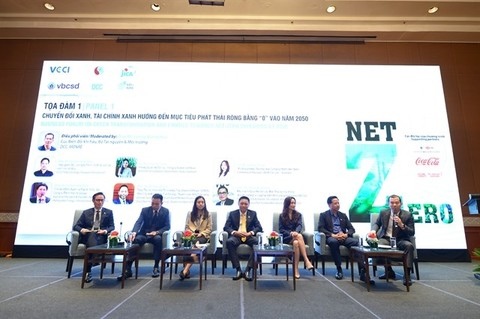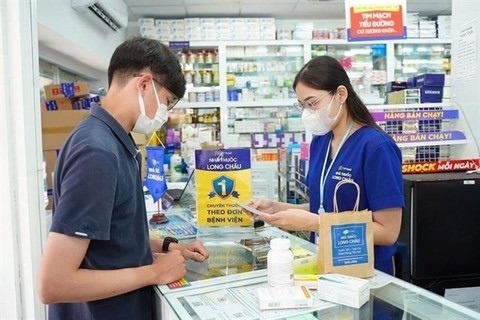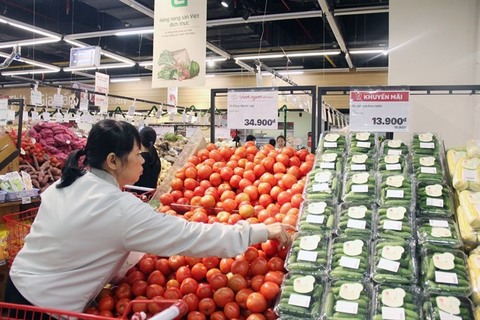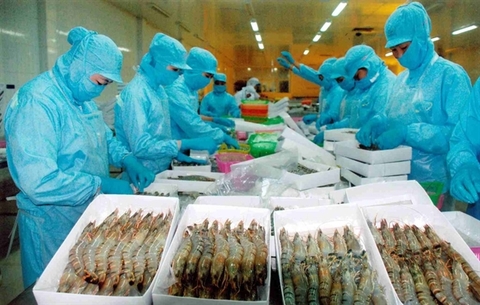Portraits of the farmer
Portraits of the farmer
Let farmers themselves paint their own portraits. What they desperately need is that one should fulfill the social role assigned to them. It’s nonsense if the farmer’s portrait is a beautiful one, but their income remains the lowest in the social hierarchy.
During the last century, when the war in Vietnam was still raging on fiercely, farmers in many parts of the Mekong Delta could do their work on the field only at night because it was too dangerous to do so during daytime. They then felt lucky if their harvest was enough to feed their families.
The war finally came to an end and farmers were free to cultivate on their fields no longer fearful of merciless bullets, bombs and shells. However, then was also an experimental time when the “production team model” was introduced, which put farmers regionwide into groups, big and small. Subsequently, farmers in “farming cooperatives” and “production teams” started their workday in line with the alarm bell. Their daily attendance was recorded so that the harvest was divided up in accordance with the recorded time. Farmers were supposed to become “agricultural workers” at the time.
Unfortunately, the result was that after a few years implementing the “production team model,” the rice fields became immense grassland. Meanwhile, farmers had to do their best only to earn enough to feed their families. The dream of “agricultural workers” seemed to have run wild.
Next came the doi moi (renovation) in economy. As farmers were “untied” again, their free creativity helped maximize their labor. As a matter of fact, the same fields and the same people who were almost starving in the previous year now had enough rice to feed not only themselves but also their poultry. One year later, Vietnam “reprised” her role as a rice-exporting nation after a long, long time of hiatus.
Throughout the delta, people were talking about rice production. Provincial leaderships found their creditability significantly improved as soon as the province’s rice production reached the one-million-ton mark. A role model farmer typical of his or her time had to be a “five-ton producer,” who was able to harvest at least five tons of rice on a hectare of rice field.
That was sufficient to prompt farmers to raise the number of their rice crops a year. Three crops a year was soon obsolete to be replaced by “seven crops during two years.” State agencies tried their best to dig canals, both on the ground and underground, build drains and dykes, and reclaim all areas of acid and saline soil for cultivation. During the harvest season, all warehouses were full, so rice bags were stacked up on both sides of the road looking like stone walls in the highlands.
It took Vietnam only a short while to soar from a rice-exporting country to the stardom of the world’s leading rice exporters as she is now. However, Vietnamese farmers in the delta no longer feel happy with the title simply because Vietnamese rice prices are way too low.
Although farmers work ceaselessly throughout the year and their harvests are impressive, plenty of them do not earn enough for their families. In many cases, when the wife or children of a farmer fall ill, the breadwinner has to get loans to pay for the medical expenses. In every couple of years, the State has to intervene by instructing “the whole political system” to rescue farmers who are helpless by flooding, drought or salination, or a glut of rice on the market which sends prices diving.
During each of these events, farmers are to blame for their “unplanned production,” their failure to link the “four parties” (namely, nhà nông, nhà nước, nhà buôn, nhà khoa học—farmers, the State, traders and agronomists), and their failure to “detect market signs.” However, no matter how many parties should involve, it is farmers who bear the brunt when there is a glut of rice on the market. All other parties are simply nowhere to be seen.
And so the portrait of the Vietnamese farmer was repainted. Farmers began to shun from large volumes of rice production. Instead, they focused on quality, making use of a series of new criteria, such as VietGAP and GlobalGAP. Farmers were taught on how to sell products before cultivation, and how to know more about their customers’ requirements and taste before sowing their seeds. It seemed then that the farmer’s portrait was similar to that of the boss of a produce-exporting company.
The Industrial Revolution 4.0 has rushed in. Farmers are required to surf on the Internet to seek all types of information, from cultivation techniques and safety to product standards and consumption. Knowledge to be acquired concerns not only the local market or Vietnam but also the global marketplace. Therefore, the Vietnamese farmer’s portrait is pretty much the same as that of a leader in the agricultural sector.
Apparently, to be a successful farmer these days, he or she must be a “four-in-one creature,” including a scientist, a businesspeople, a policymaker and a farmer! But a farmer is by no means a superman. He or she is only a ring in a social chain, whose role is producing food. And farmers have long fulfilled their task, even in an excellent way.
However, farmers have had to do it all alone, which is why they are still poor. For example, they have to “accurately forecast the weather” and anticipate flooding and saltwater intrusion, now too precarious even to professional weather forecasters. What’s more, farmers have to master market prices and changes in customer tastes.
In reality, the above pieces of information are essential for successful cultivation, without which farmers cannot produce agricultural products suiting customer requirements. What’s more, every bumper crop is followed by hikes of commodity prices—from fertilizers and plant protection drugs to sugar and detergent. Well, a farmer may sell dozens of tons of rice at a time, but what he or she actually earns is not much.
Let farmers themselves paint their own portraits which please them. What they desperately need is every party as mentioned above should fulfill their assigned social role. It’s nonsense if the farmer’s portrait is a beautiful one, but their income remains the lowest in the social hierarchy.









